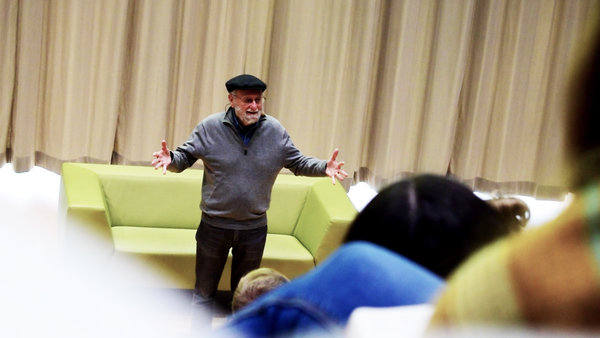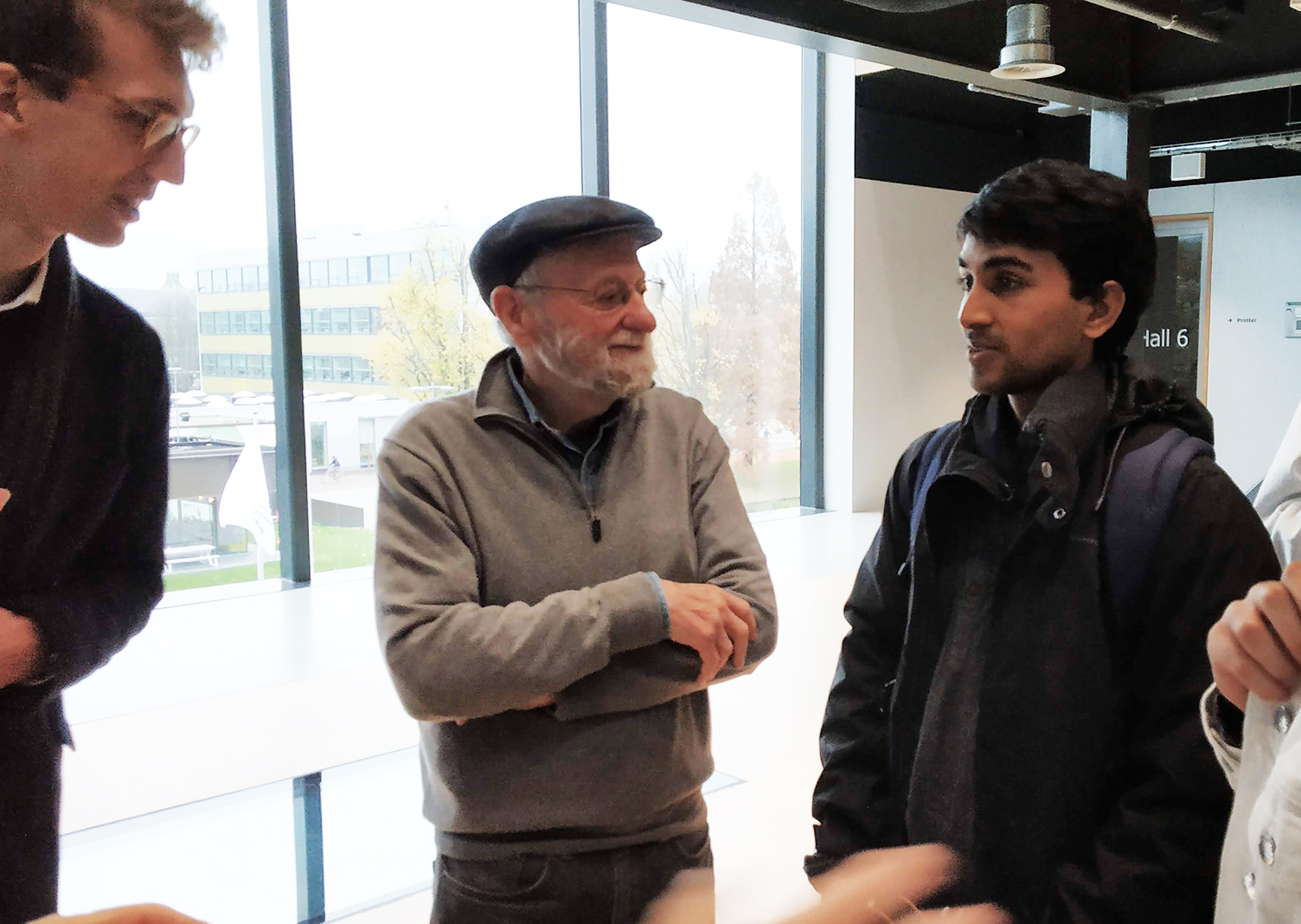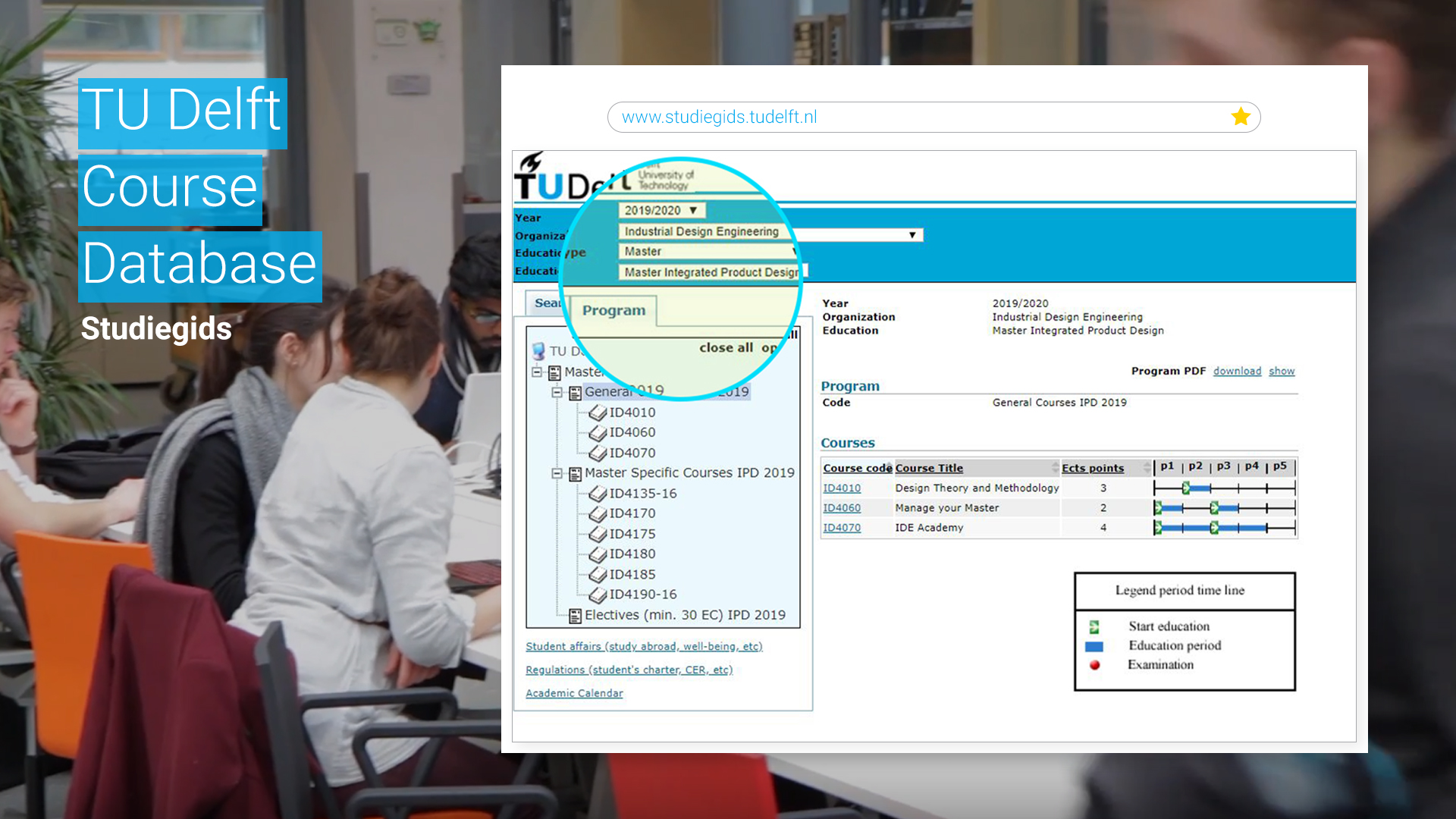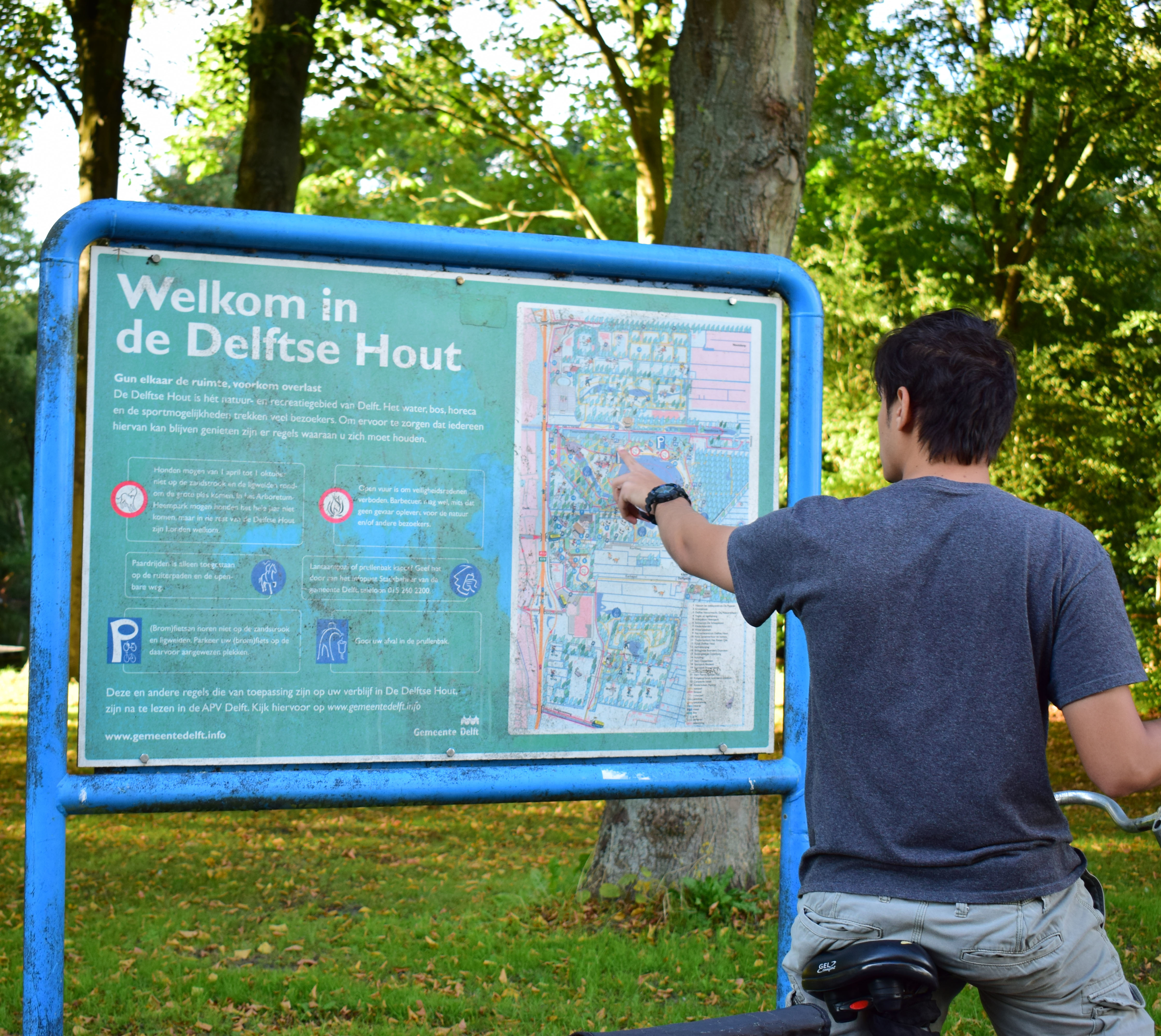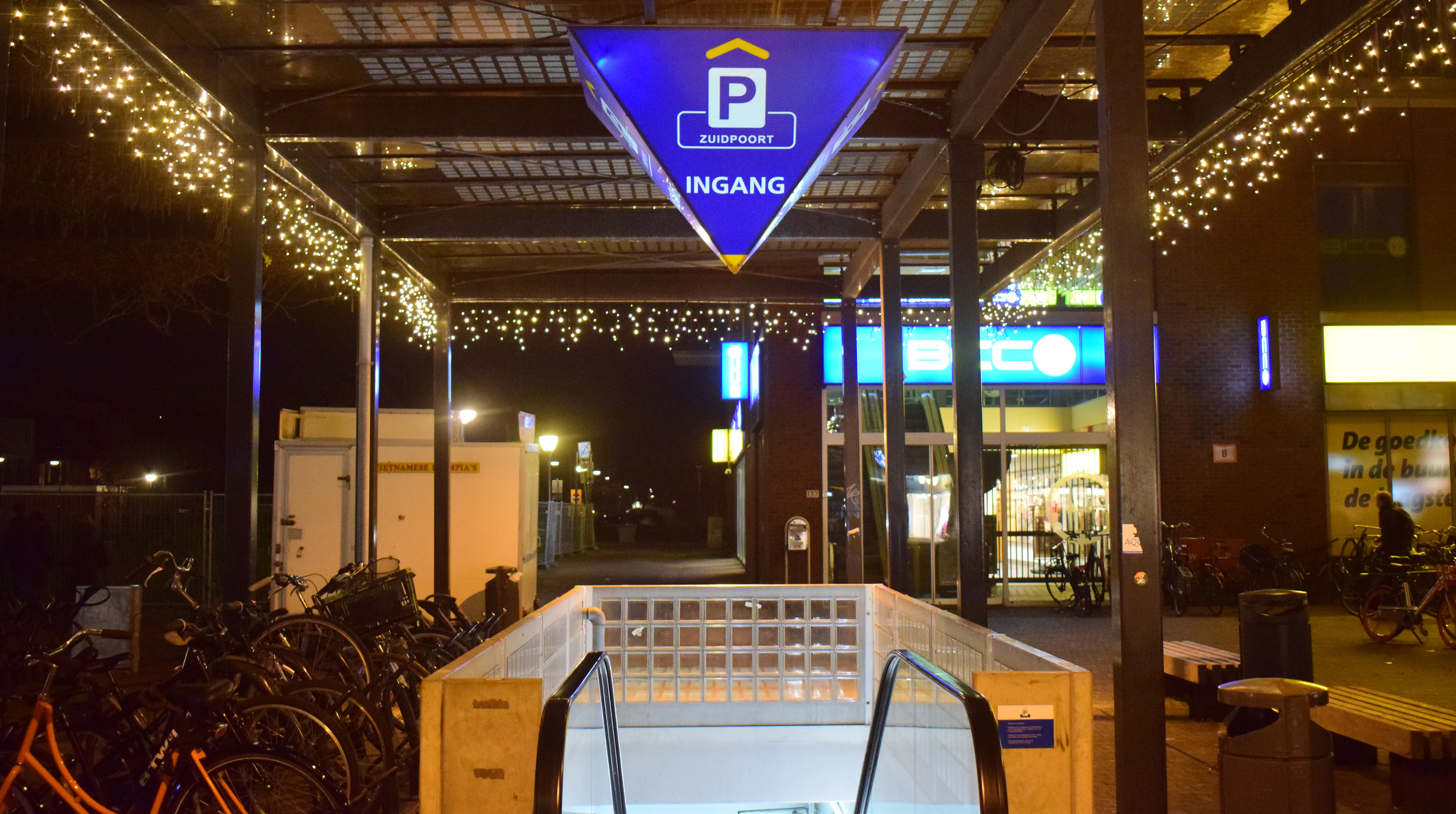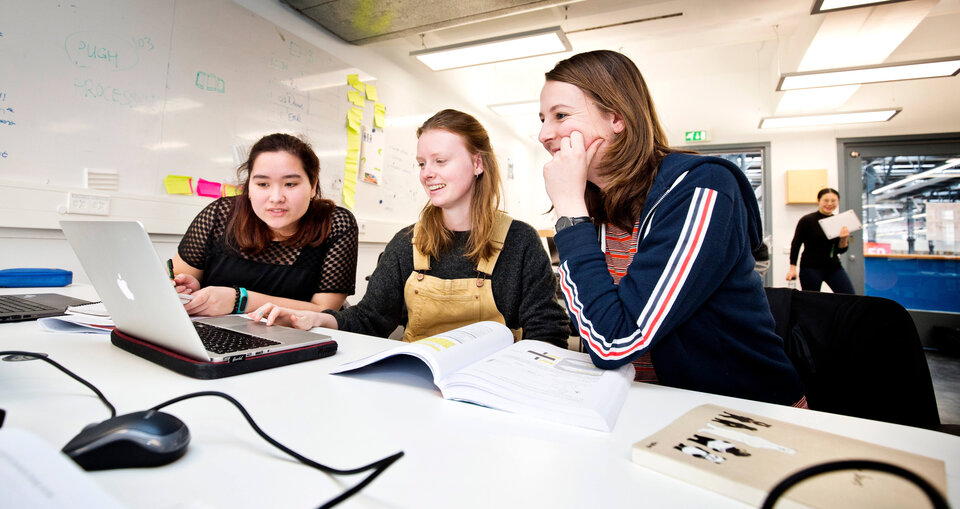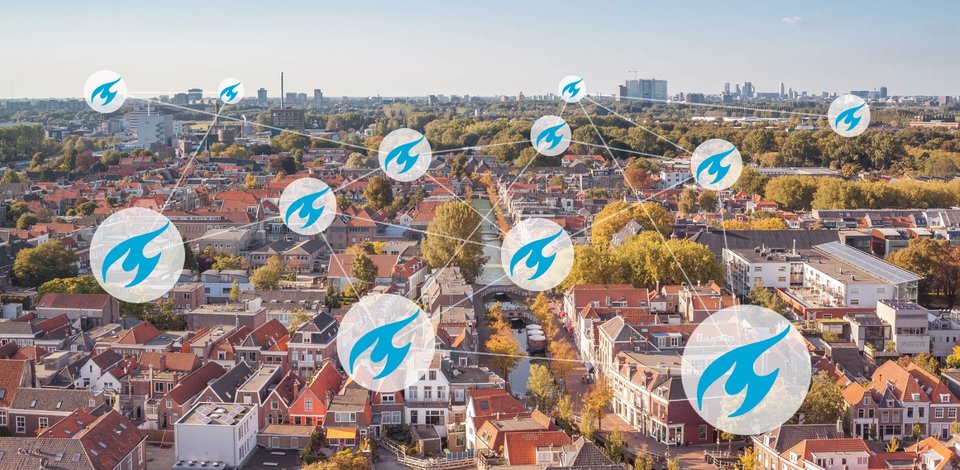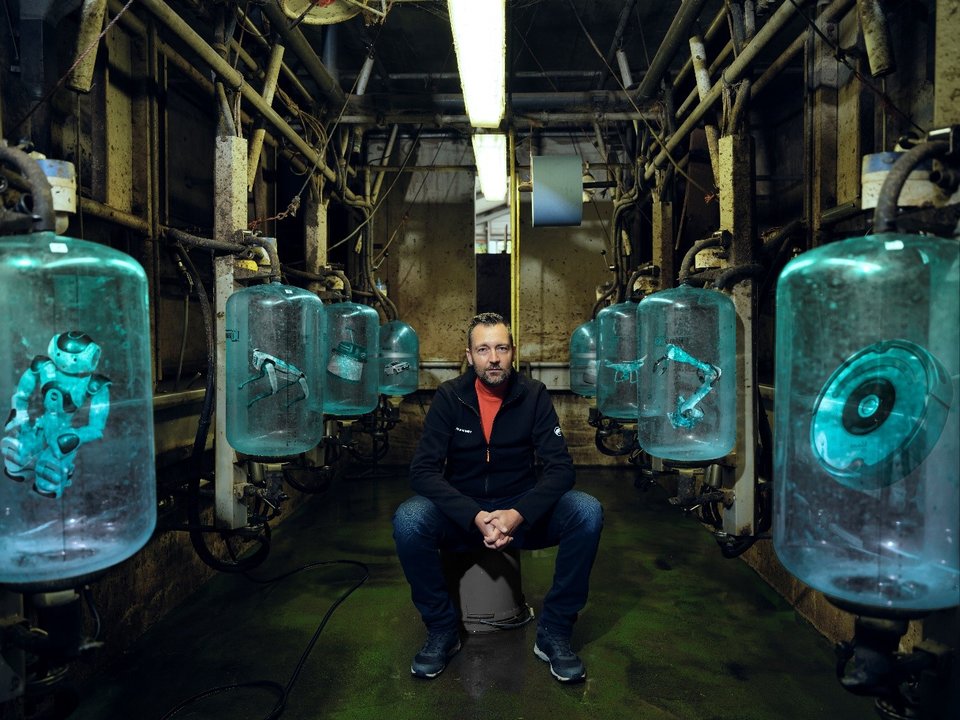Aman Dalal's experiences in Delft
INTERNATIONAL STUDENTS SHARE THEIR EXPERIENCES AT IDE
Aman's most recent article:
What do students think of IDE/IPD?
This article takes a question-answer format where the perspectives of various students have been gathered in each answer. Some of the following questions are common among incoming students, especially those coming from afar.
Why did you choose IPD among the three masters?
“I loved what I did in my bachelor of industrial design but it was very theoretical in my opinion. I wanted to take it forward by getting more practical experience”, said a student from Italy. She continued, “Out of the three masters, IPD is the one that resembles my bachelor studies the most and is serving as a perfect extension to it.”
A student from India pointed out that to him hands-on work is very important as he likes to build things. He wanted to learn more about this tangible aspect of product design and apply it in projects. He believes IPD to be the ‘core’ product design among the three options and it suited him the best.
Why did you decide to study at IDE from all the other options around the world?
“IDE offers a fantastic blend between engineering and design!”, exclaims another student from India, “The course is technical while at the same time it can be a little artsy if you want it to. It aims to explore many sides of the design-engineering equation and in the end, you get to find out what kind of a designer you are in the two years.” To summarize it, “all in all, it makes for a great curry!”, he laughs.
An engineer from Spain explains, “I am an engineer by training and I wanted an entry into the product design world. I was intrigued by this field and was looking for a way in so I can later work in the design industry and this served as a perfect course. I wasn’t really able to find any other course that matched the curriculum, even in the (other) top universities around the world. Moreover, my interest in cycling also attracted me to the Netherlands."
A student from Korea adds on his perspective to studying in the Netherlands, “I have been learning English since childhood but never really got to practice it in real life. Apart from the course, an advantage is that people here speak really good English. So I get to practice speaking too all the time.” A Chinese student reasons that she was in contact with other Chinese students who have been here before and they always spoke of the welcoming nature of the teachers and students at IDE and in the Netherlands in general. The positive reviews drew her to studying and later wanting to work in Delft!
How would you compare your expectations and your experience with studying IPD?
“My expectations were very high of the education at TU Delft and I’m more than pleased to say that IDE, the curriculum, the standard of projects, the industry connections, events like the business fair, etc. all have kept up to their promise.”, asserts a graduating student from the US.
“Coming from an engineering background, I was curious how it would be to study among designers who have done something like this before. I’m glad that the MVE (Master Variant for Engineers) was set up to facilitate students like me who really want to be designers. The downside is that you miss all the wonderful electives that IDE offers but you do integrate really well if you follow this track as an engineer”, explains a student from India who followed one semester of bridging MVE courses.
A student from Latin America was pleasantly surprised by the closeness of connection that companies have in IPD master projects in the courses of Advanced Concept Design and Advanced Embodiment Design. She wasn’t completely aware that she would be working while positioning these companies as clients while doing the master. This aspect exceeded all her expectations and she
What do you like most about the IPD curriculum?
The IPD curriculum is composed of two major projects and smaller courses along their side in the first two semesters. The third semester gives you the option to follow electives which include an optional internship. Lastly, the fourth semester is the graduation project that can be done with the faculty, a company, or an organization.
The most common answer to this question was that students are a big fan of the project-based curriculum. “You don’t feel like you are studying. Rather it is more like working for clients, who can be different sorts of companies or governmental organizations depending on your project. Ultimately, you learn much more with this practical exposure and this was by far my favourite aspect of the master”, says a student who was new to working with companies outside of the university.
A Dutch student who did his bachelor at IDE was happy with the variety of electives offered in the third semester. He wanted to dive deeper into some topics which he wasn’t able to during the bachelor. The elective courses are common between all the three masters and students are able to experience a touch of Strategic Design or Design for Interaction too using these courses. He adds, “You can really shape your master according to your interest and that is very satisfying.”
A bunch of students (graduating at the time of writing) are happy that they were able to choose their own graduation projects, some with a company, some with a research organization, and some with the university itself. They share that it is not the case that this would be possible with other universities. Other places offer a list of topics that they can choose from but at IDE, you can really pursue what you want and where you want it for your final project.
More articles by Aman
Meeting Don Norman
The man, the myth, the legend
Aman Dalal | April 2020
Around 5 years ago, ‘The Design of Everyday Things’ was the book that introduced me to the field of industrial design. Back in the day, I carried it everywhere I went and was amazed by the attention to the details of the world that is offered in each of its chapters.
When I got to meet its author, a superstar in the world of design, psychology, and cognitive science, Don Norman, right here in our own faculty, I was elated.
-
As soon as I found out Don was going to be in Delft for the 50th anniversary symposium of our Industrial Design Engineering faculty, I looked for events and adjusted my schedule to make sure I could interact with him. I found a match in a Q&A Session at IDE and I couldn’t be more eager to be inside that hall.
He talked about some of his plethora of experiences and had a fun, insightful story to go along with his answer to every question. When the moment came, not a second passed by before my hand shot up in the air. My question to him was, ‘As a product designer, sometimes the best solution I find to problems and project briefs, is to not design. Do you share this feeling?’
This statement is right at the heart of sustainability and design for the future and has kept me awake on many nights. It questions everything I do and that I am working towards. I was exceedingly curious to hear what he has to say about this.
Norman finally eased into the couch placed in the middle of the stage for him. After a few silent moments, he reiterated Victor Papanek, “This brings us back to Papanek, ‘There are professions more harmful than industrial design, but only a few’.”
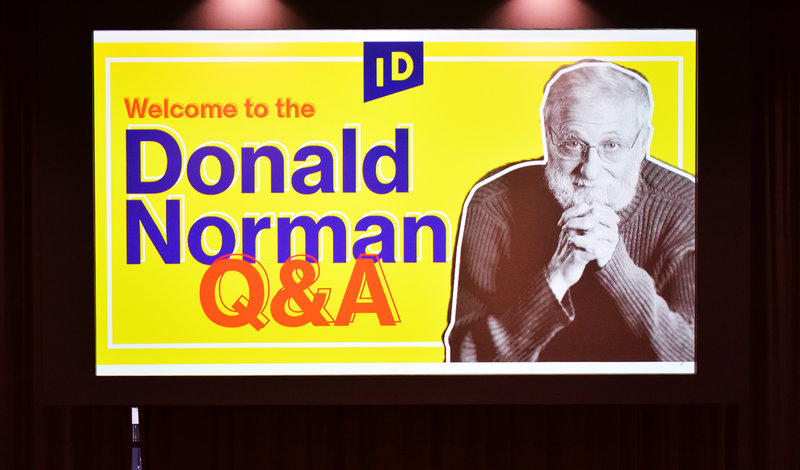
He was referring to the first sentence of Papanek’s book, Design for the Real World. But why would Papanek introduce his very profession with such a negative stance? The reason is pretty clear to me. Design, in any form, has the power to ‘add’ to the world. With this power, comes the responsibility of choosing what to design, what gets made, and what people use. It has the power to create, modify, and control what people demand, and again in turn, what gets created. If you look at this loop and scale it up, this is quite some influence on the world and the way we use our seemingly abundant resources.
Norman carried on, “We blame designers, and that implies we assume that designers have more power than they really do.” He stated the fact that very few designers have the power to decide what should or should not be made. Once the management decides to do something, it is very hard for someone lower in the hierarchy of companies say it is a bad idea. Neither is it difficult for management to find someone else willing to do exactly as they say. Moreover, some things that are bad for the environment are often good for the business, “and that’s evil, that’s wrong.”
“So how do we fix that?”
“Don’t solve the problem you are given. Find out what the real problem is.” The real problem is not that we design things that are bad but that we are asked to do so. And yet we don’t have much power to say no.
“So how do we change that?”
He continues, “One thing we have to do is to get ourselves in a position of power.” We need more designers that are, say, CDOs, CEOs, Managing Directors, not only of small companies but also of large companies.
“However, that’s not enough.” Because we have to change the culture and behavior of people. He gave a practical example of cars. While it is fascinating to have automobiles that go from 0 to 100 in 4 seconds, is that feature something people really use? That’s what people crave and buy, but do they really need it? Will it ruin their lives if it takes them a few seconds longer?
“Maybe people should brag about how slow their car is or that it takes 20 seconds to go from 0 to 100”, because it is indeed more efficient than those superfast cars.
I agree that this is a very specific example and there would be plenty of people on the other side of the argument. But I still believe the time we are living in to be a time to re-think what we really need and should care for. And more importantly, what we should design.
When I took this fresh line of thought to my colleagues at my internship company the next hour, it was welcomed with a healthy discussion. Jiaji Zhao (also IDE IPD graduate) offered his perspective that if industrial designers wouldn’t do their jobs, someone else would do it. And then, we’ll have badly designed products, services, and solutions. Why give away the opportunity of making a difference when we have the ability to do so? This brought us to what IPD majorly focuses on – products and projects that have the possibility of creating real value and making an impact on people’s lives. And that is what I love most about the master course, the quintessence in everything we do.
The 15th day of November was crucial for me as an alignment of my north, reassurance that what I’m working towards and what I’m studying make absolute sense, and I will be ever so grateful to Don Norman and IDE for the same.
Living in Delft
Life beyond the faculty
Aman Dalal | April 2020
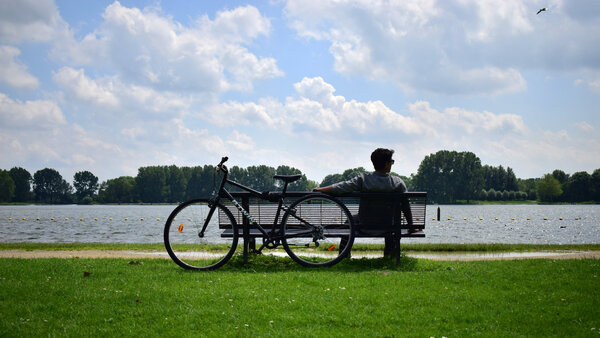
An important consideration, especially when you are going abroad to study, is the location of your university. Situated in the historic city of Delft, doing a master at IDE comes with the opportunity of having an excellent lifestyle outside of academics.
-
If we zoom out on the map a bit, Delft is a very approachable city in the Netherlands. It lies in the province Zuid Holland in the vicinity of cities like The Hague (political capital), Rotterdam (European hub), Gouda (popular for its cheese). These places can be reached in very short train rides or if you fancy, bike rides along scenic routes. The Amsterdam Schiphol Airport is only 40 minutes in the train and the capital, Amsterdam, just a bit further North. The central location of Delft is handy if you are looking forward to exploring what the Netherlands has to offer in terms of traveling.
From the outside, Delft is quite a touristy destination, even for the Dutch. It is most famous for its Delftse Blauw (Delft Blue) ceramics (and factory) and its history attached with the father of the nation, Willem van Oranje. In the city center, it is usual to find people exploring the local market, souvenir shops, and enjoying the iconic view from the top of the new church or looking at the fascinating leaning tower of the old church. You can also find them marveling at the remarkable Oostport (Eastern Gate) or one of Delft’s many renowned museums spread throughout the city. Delft is home to just over a hundred thousand people out of which almost 25% are TU students. This makes the city very student-friendly and internationally oriented.
From the inside, Delft can be a satisfyingly peaceful place to live in. It is calm when you need it to be but always welcomes you to go out for events such as museum days, light festivals, music performances, and much more. From a fully-equipped sports center (X TU Delft) to a fantastic university library, you are never too far from what you want to do. A beautiful lake just a short bike ride away from the faculty is the favorite destination among students for barbecues, frisbee, or just a relaxing walk when the sun is out. Perfectly suited for (international) students, every person I’ve ever met in Delft speaks commendable English.
Having been here for over 1.5 years, I can say that Delft is the coziest city I have lived in! My favourite characteristic of the city is its snug size. I like to call it a ‘walking city’ and I love being able to just step out and walk to the university, market, train station, sports center, library, or a café in the city center within minutes. If you live in a less central location, you can still approach all these places by bike in a similar amount of time! Personally, I couldn’t be happier with the biking infrastructure of the country. I am a cycling enthusiast and for people like me, the Netherlands is what one might call ‘heaven’. I crave long rides especially on weekends with good weather. A ride to Scheveningen (famous beach in The Hague) or along the countryside on the way to Zoetermeer has become my tradition for Saturday mornings.
Given all of the above, I reckon Delft as a very exciting place to live as a student. However, it wouldn’t be fair if I give you every detail. I can assure you that there is plenty to explore and a memorable student life awaits you in the Netherlands.
IPD FAQ: Common Questions from International Students
Aman Dalal | January 2020
The faculty of IDE has a long-distance mentor programme. Admitted international MSc applicants preparing for coming to Delft are brought into contact with current MSc students in the same programme. Being a long-distance mentor, I often get questions about IPD from international students. They are usually about what they can expect from the master course and how to prepare the best for it. Here I have summed up the most common ones that can help every future student or applicant understand the curriculum better.
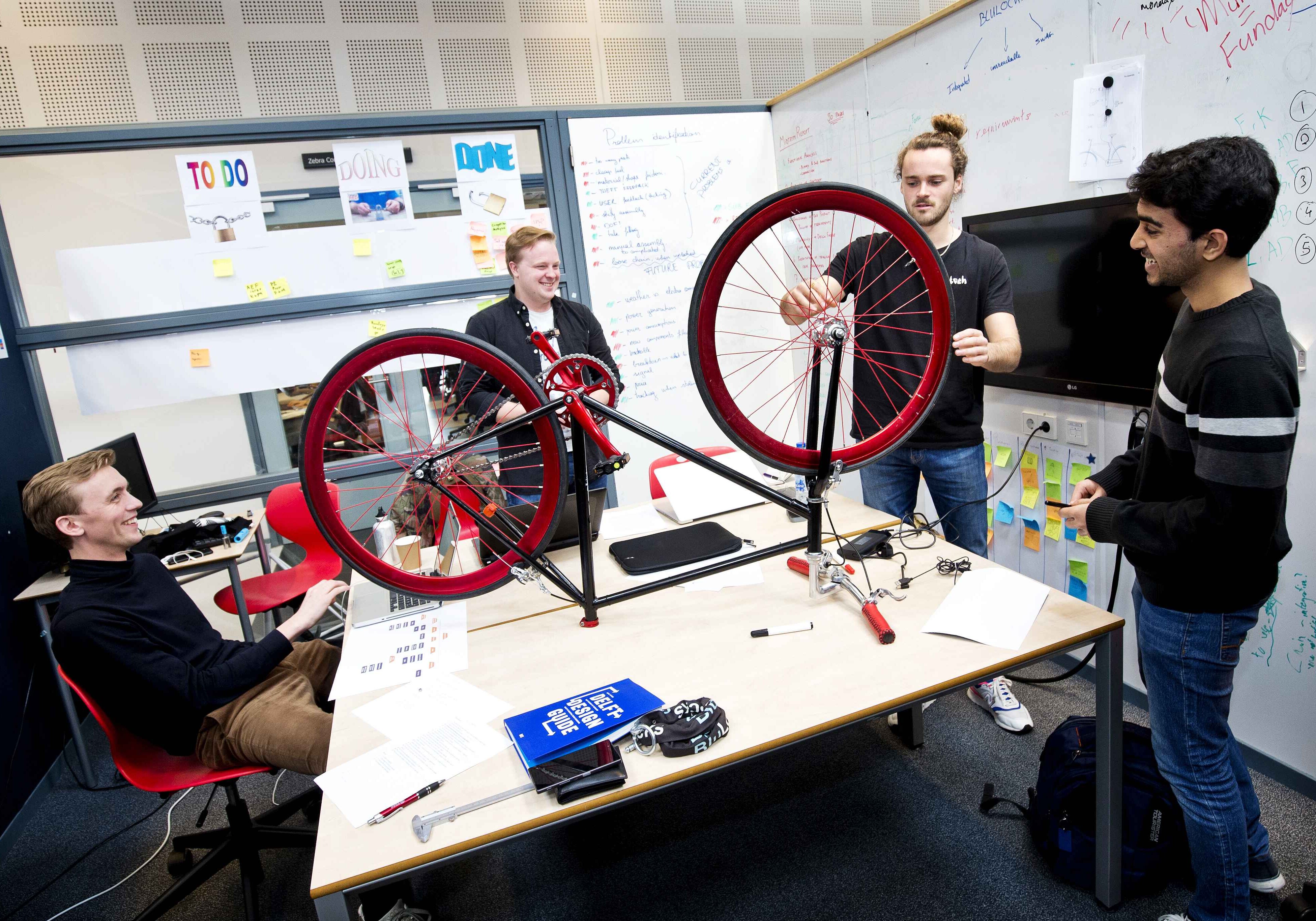
-
1) How is the structure of the 2-year master?
The 2 years are clearly divided into 4 semesters. Each semester is further divided into 2 quarters of 10 weeks each. The 1st and 2nd semesters consist of compulsory IPD courses, the 3rd semester is specially dedicated to electives, and the 4th semester is for your graduation project. Each semester accounts for 30 ECs, adding up to the 120 EC master program.
More information about the course structure can be found in my other article, Courses in brief.
2) What is the nature of courses are offered?
Plenty of courses offered in IPD are project-based. Rather than being dry and theoretical, they are practical, involve teamwork and also clients. This is especially true for the first year courses composed of concept and embodiment design projects.
A lot of mandatory as well as optional IDE courses include working in student groups. Knowledge expansion is supported by lectures, workshops, and discussions with experts from the faculty. In most courses, the combination of all these aspects makes sure that students gain theoretical knowledge while also applying it practically.
3) How much freedom do students have in choosing courses?
The courses in the first year are mandatory and your time-table is already defined. You are still free to choose your preferences for the projects you wish to work on within these courses.
The 3rd semester electives (30 ECs) are totally up to you to select. You may opt for pure IPD-related courses or broaden your knowledge by pursuing courses related to other topics. These topics are extensive ranging from design drawing to the business of design consultancies, from using machine learning and electronics for prototyping to in-house team projects with companies. It is also possible to follow courses outside the IDE faculty including Dutch language courses.
The 4th semester graduation project is also free for you to determine. You can choose to work on a topic of your interest at IDE or outside at a company. With all these options in both years, you are quite independent to shape your master the way you want.
4) What do you like the best about the IPD curriculum?
In my opinion, the fact that the courses are made to suit real-life design work is the largest benefit of studying at IDE. The 2 major first-year courses are designed such that students are consulting for real clients (companies or organizations). This quickly teaches you about the interests of stakeholders, client communication, presentations, both methodical and pragmatic approach to design among countless other things that are useful in working outside the faculty. This kind of learning with an experiential component is hugely favourable in developing both your soft and hard design skills, and is what I have gained the most from.
5) How to best prepare before starting the 1st semester?
Reading this FAQ (and other articles) and getting a general idea of what you will do in the 2 years is a good starting point. This way you would know what to expect and not too many things will catch you off guard.
It will be useful to skim through the descriptions of the courses you will study. You can do this on StudieGids by using the Program section.
Another good way to be ready for studying at IDE is to read the celebrated Delft Design Guide. It is a neat reference guide that speaks volumes about the distinguished methodical approach to design at Delft. It will not only be beneficial for your knowledge but also help you quickly adapt to the terminology that is used often here by teachers and students alike.
Finally, it wouldn’t hurt to brush up your sketching, CAD, rendering, and Adobe skills, especially what you haven’t been practicing since a while. You’ll probably use all these at some point in your 1st year and it can only help to be quick at them.
Don’t forget to take some time out to be with your family and enjoy the last weeks at home before you head out for your exciting new journey in Delft.
Internship Opportunities: An explorative experience
Aman Dalal | November 2019
Internships are a great way to learn and explore your interests while you are still pursuing your master studies. They take you out to the real world, give insights on how things work there, and help build yourself up as a designer. While gaining academic knowledge is one thing, applying this knowledge to an industrial project is a whole different aspect and that is where internships come in handy with the offer of a new perspective without the pressure of making a long term commitment. Fortunately, at IDE we are allowed to carry out an internship not only in our own time, but are also awarded 15 ECs for it in the elective semester (3rd semester of the master program).
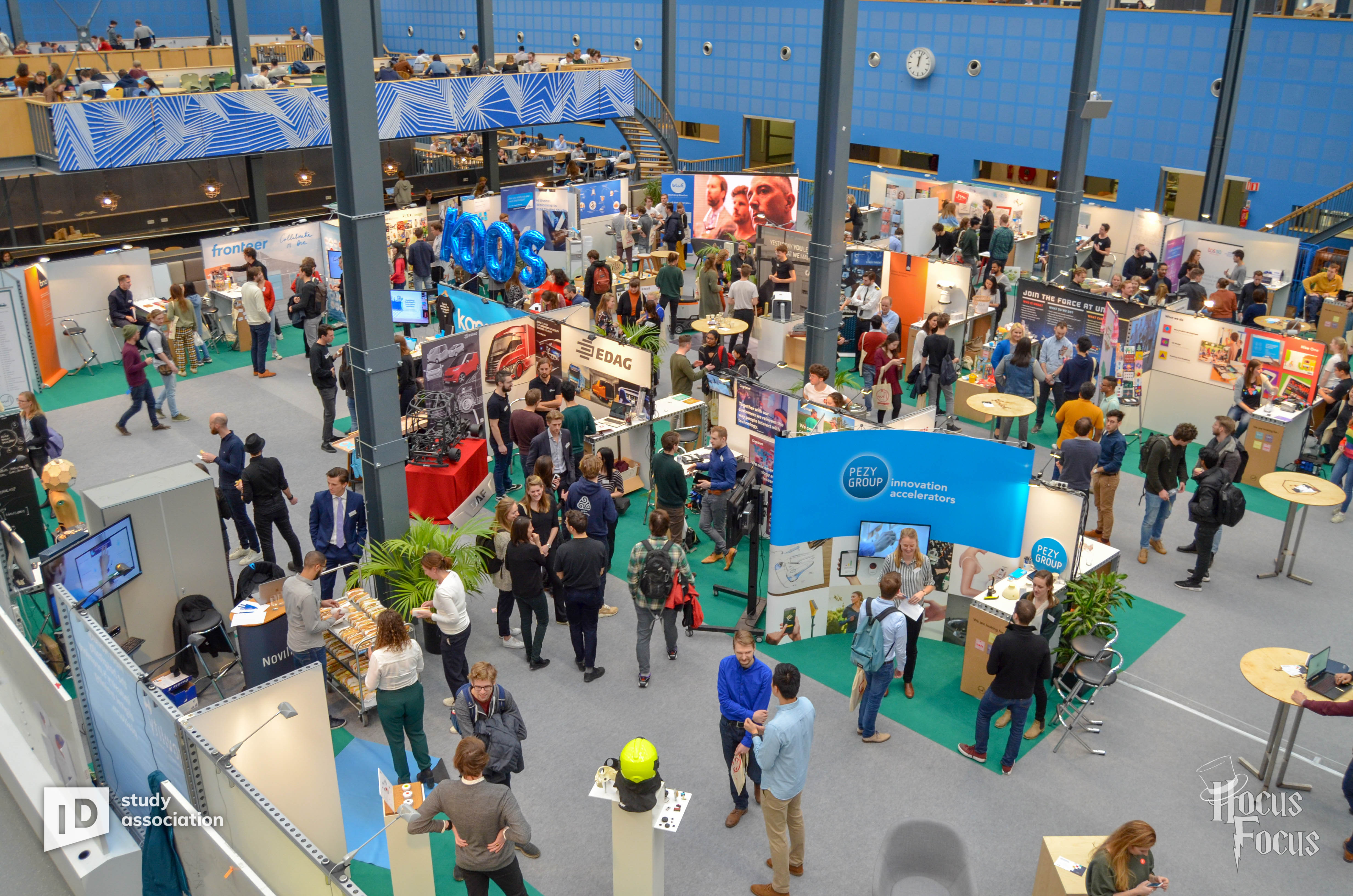
-
You can do an internship in the elective semester itself, but another nice option is to start an internship in the summer after your 1st year and finish it earlier. The duration should be either 10 weeks (full time) or 20 weeks (part time) to earn the ECs. The internship is bound to make it easier for you to satisfy your EC requirements as it already accounts for half of the elective semester ECs.
Firstly, you must decide where you would like to do an internship. You can choose to do it in the Netherlands or anywhere else in the world. It is naturally more straightforward to find an internship in the Netherlands as you would be living here, but that shouldn’t restrict you from opportunities abroad.
Secondly, you should think about the kind of a company you would like to intern for. You can map this to your future career and point in that direction or might want to explore a totally new field that you are passionate about. Students generally intern at design consultancies, start-ups, in-house design teams of large corporates, government agencies, etc.
Finally, as you can imagine, finding an internship that fits you is a significant task in itself. At IDE we have several options to help you with it.
The first being the IDE Business Fair which is held in March every year with more than 40 visiting companies and opportunities to get speed-dates as well as talk to employees at their respective stalls. This is an opportunity that should not be missed if you are looking for an internship.
Another major event is De Delftse Bedrijvendagen in February-March in which over 150 companies from all over the country visit to seek interns and employees over the span of a few days. This is not only a great opportunity to network with a wide variety of people but also a place to find an internship in a corporate environment or at a multi-disciplinary company.
The opportunities are not limited to these events but extend to all the places where you can network with executives. This includes lunch lectures and workshops by companies at IDE, open days, YES!Delft events, and even LinkedIn.
Hopefully, with this article gave you enough insight about the opportunities and importance of internships along with your study program. For further details, you can refer to the internship manual on the TU Delft website which provides a complete picture.
IPD Courses in Brief: an overview of what you’ll study
Aman Dalal | November 2019
This article will give you a clear idea of what the master course encapsulates and what you can expect in your 2-year study. The overview is written from my (student) perspective and experience and detailed information can always be found on StudieGids by going to the Programs section.
-
Advanced Concept Design (year 1, fall semester):
A project-based course where you work with a company, governmental or social organization (i.e. your client) on a given brief to develop concepts of possible solutions. The first quarter is focused on research and is done with a group of 4-5 students guided by a coach and several experts. The second quarter is primarily individual and involves plenty of ideation, definition, client persuasion, user testing, and some prototyping. The course is composed of sub-courses that have their own lectures and assignments which help move the project further.
Advanced Embodiment Design (year 1, spring semester):
Similar in style to ACD, AED is also a project with a client and the course itself is divided into expertise areas. Both the quarters of this course are group work guided by a coach. Starting from a concept, reaching at least a functional prototype is the goal of every project. The setting of this project is quite similar to a consultancy or in-house design team with added learning attributes.
Other courses (year 1):
Year 1 has still more courses that broaden your knowledge and also let you interact with a lot of students and teachers. One of the courses helps you draw a path for your master program and graduation project, while another helps you deepen your theoretical knowledge about design methodology. A few other courses are over specific topics like sustainability and product innovation. You will also follow a year-long course wherein you attend 14 workshops on topics in the vicinity of design from experts within or outside the faculty.
Moreover, you might also be asked or suggested to follow adaptation courses on drawing, electronics, and ergonomics if you haven’t had such topics in your previous education.
Electives (3rd semester):
This is undoubtedly the most flexible semester of your master program. For both the quarters, you have a multitude of electives offered by our faculty to choose from. The range of their topics is too wide to list in this article. More information can be found on the IDE MSc Electives page.
As a part of your electives, you have the opportunity to do an internship for either 10 weeks full-time or 20 weeks part-time. This can be at a start-up, established company, or organization within or outside The Netherlands. The internship is not only an excellent way to gain industrial experience but also earn 15 ECs to contribute to your electives.
Apart from the internship, you are allowed to take courses outside the faculty as well. The most popular among international students are the Dutch language courses offered by the faculty of Technology, Policy, and Management.
Graduation project (4th semester)
The graduation project is the final step of your master and earns you the closing 30 ECs you require to graduate. There are endless possibilities for the kinds of graduation projects you can do. You can choose to do this project at the faculty or a company of your choice. You will be guided by a chair (supervisor) and mentor from IDE regardless of where you do it. Most students choose to do this project with a subject that they really care about or are wanting to work with in the future. However, you are free to explore new ideas, innovations, and contribute to the research.
Watch the movie, which shows the graduation projects of three (international) students.To sum this up, I believe the master course to have struck the perfect balance between being structured and flexible, organized yet with plenty of freedom. With this, I wish you the best for fruitful master studies at IDE.
Say YES!Delft
Aman Dalal | February 2019
The faculty of Industrial Design Engineering has a lot to offer in the master courses. However, some of us like to push for the extra mile and engage in pursuits outside academia. If you’re such a person, have an entrepreneurial mindset, or just want to experience the start-up culture in Delft and get a feel for how everything works, say yes to YES!Delft.
As lively as the name sounds, YES!Delft is TU Delft’s own start-up incubator with over 70 exciting and energetic companies founded by graduates with big ideas. The facilities, events, investors, associations, and innovation make YES!Delft a leading tech-incubator not only in the Netherlands, but in Europe.

-
YES!Delft has a diverse portfolio of companies that ranges from Robotics to Blockchain, from MedTech to Aviation and is by far the largest physical tech-startup community in the country. It is likely that you would find multiple companies here working in an area of your interest.
Since 2005, YES!Delft has helped over 200 companies grow their ideas and businesses from paper to revenue. They not only provide office spaces, prototyping labs, conference rooms etc. but also guide start-ups along their way up with coaches, mentors, investors, and potential partners.
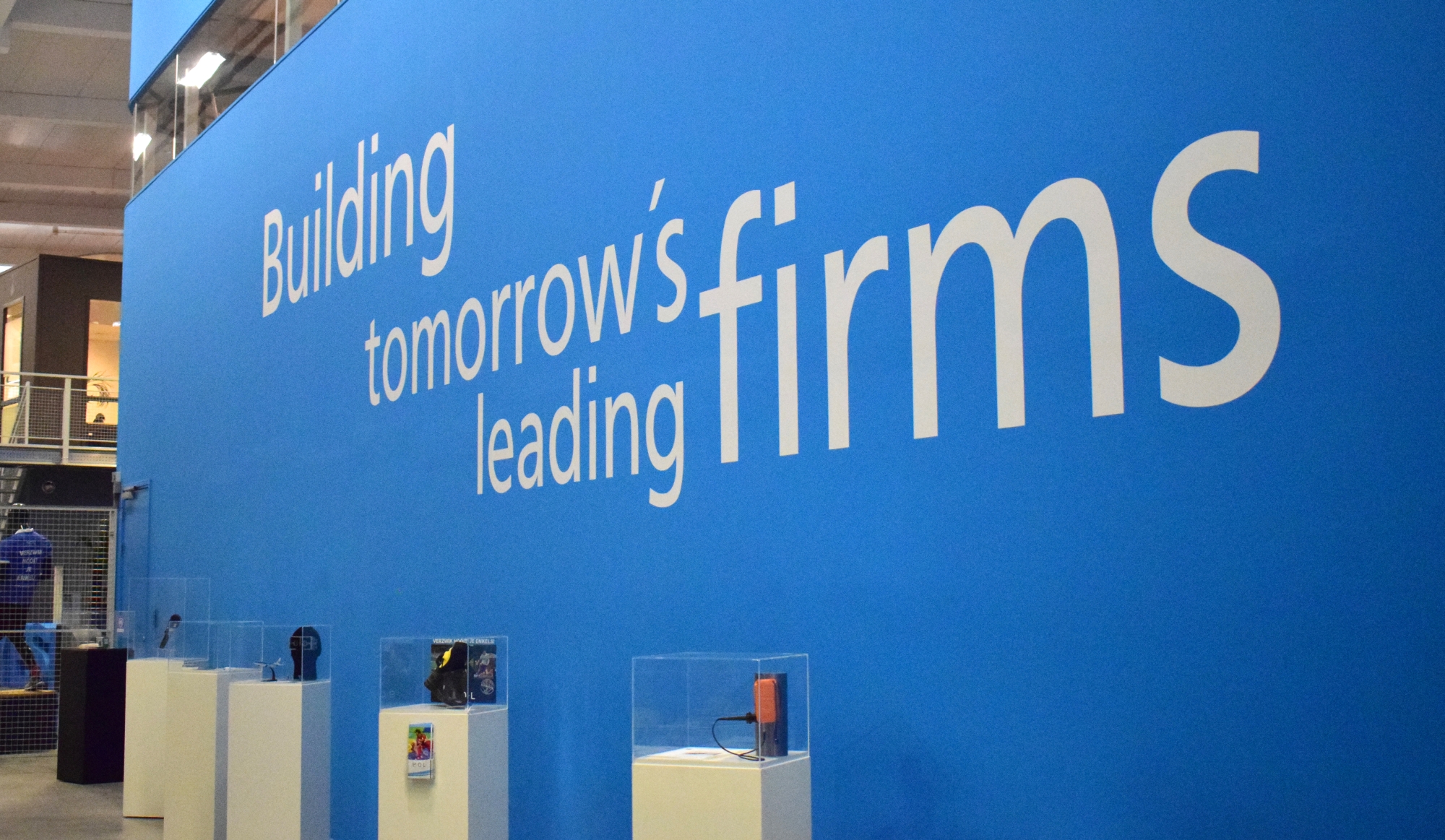
Building connections during your graduate studies is an important asset that could be very valuable for your future and YES!Delft is a perfect place to start working on it. Start-up events, discovery days, coaching events, and a lot more takes place on a weekly basis to help companies learn, network, and grow. It is fantastic place to find an internship during the break or if you have a great idea, to build your own company after you graduate.
The best part is, all this wonderful innovation is taking place right in our campus, only a 10-minute bike ride from the faculty of Industrial Design Engineering! For more information about the amazing work being done there, head over to yesdelft.com or watch this video:
An Introduction to the Language
Aman Dalal | December 2018
Do you really need to learn Dutch to live in Delft? The opinion shared by most students is, “Not at all. Everyone here speaks English so well!”
While that is very true, some of us have a different mindset. If you’ve decided to hop on for a two year long journey to the Netherlands, learning some survival Dutch couldn’t harm. I will take you through what Dutch looks like. Shall we beginnen?
(That’s not a typo. Quite naturally, beginnen means to begin. Many Dutch words are very similar to their English counterparts and if you speak the latter, it wouldn’t take long to understand the former.)
-
To keep the pronunciations simple for now, replace every Dutch ‘j’ with an English ‘y’ and every Dutch ‘g’ with an English ‘kkkhhh’. Wait. That’s not like anything in English, you say. Well, yes, you might have to produce a few unfamiliar sounds and really work your throat out if you want to speak Dutch!
In our pursuit to get a feel of the language, let’s go on a short trip to the supermarket or de supermarkt.
Welkom – The supermarkt welcomes you inside!
Vruchten – Did you come here looking for fruits?
Soep – Why not also make some soup tonight because it is getting pretty koud (cold) outside.
Groenten – For your soep, you definitely need to buy some vegetables. Groenten literally comes from groen which means green.
Bon? – Quickly say ja (yes) or nee (no)! At the check-out counter, the cashier will put up this question and stare you in the eyes and you’ll be wondering if you did something terribly wrong. No, you didn’t, but would you like the receipt?
Alsjeblieft – If you said yes, you’ll be greeted with your receipt, a smile, and this incredibly pleasant sounding word. It means here you go but is also a common replacement for please.
Dank je wel – When you get the receipt, this is the right way to say thank you.
Fijne avond – Don’t forget to wish the cashier lady a fine evening before you depart.
Uitgang – Looking for the exit? Just look for the uitgang. Literally, uit means out and ga means to go. Like this, many Dutch words match their English counterparts but are spelt and pronounced slightly differently.
Let op! – Going back home? Watch out! A bike could hit you from any direction.
Hope you enjoyed our little trip. Though Dutch is known to be a difficult language to learn, I find the basics easy to grasp because of its similarity to English.
To start with, Duolingo and LearnDutch.org are great resources to get a grip on to the feeling of the language, the basic phrases, pronunciations, and some vocabulary. Doing this for a month before coming to Delft enabled me to order a coffee and ask for directions in Dutch on my first day here!
If you’re interested to immerse yourself in the language even further, joining the free Dutch courses offered by the TPM faculty would be a good idea. Until then, tot ziens!


